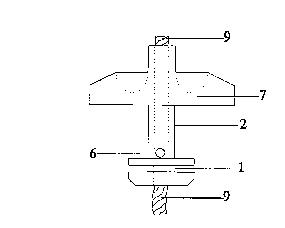Some of the information on this Web page has been provided by external sources. The Government of Canada is not responsible for the accuracy, reliability or currency of the information supplied by external sources. Users wishing to rely upon this information should consult directly with the source of the information. Content provided by external sources is not subject to official languages, privacy and accessibility requirements.
Any discrepancies in the text and image of the Claims and Abstract are due to differing posting times. Text of the Claims and Abstract are posted:
| (12) Patent Application: | (11) CA 2181838 |
|---|---|
| (54) English Title: | FRAGRANCED SPILL-PROOF WICKHOLDER |
| (54) French Title: | PORTE-MECHE POUR LAMPE A HUILE PARFUMEE |
| Status: | Deemed Abandoned and Beyond the Period of Reinstatement - Pending Response to Notice of Disregarded Communication |
| (51) International Patent Classification (IPC): |
|
|---|---|
| (72) Inventors : |
|
| (73) Owners : |
|
| (71) Applicants : |
|
| (74) Agent: | |
| (74) Associate agent: | |
| (45) Issued: | |
| (22) Filed Date: | 1996-07-23 |
| (41) Open to Public Inspection: | 1998-01-24 |
| Availability of licence: | N/A |
| Dedicated to the Public: | N/A |
| (25) Language of filing: | English |
| Patent Cooperation Treaty (PCT): | No |
|---|
| (30) Application Priority Data: | None |
|---|
In a device for holding a wick for an liquid oil lamp, in a bottle, it is known to have a stem with a
vertical hole varying in size such that an appropriate wick, used to draw up the liquid oil, can be
threaded through the vertical hole, such that the wick is held in place because of the friction which is
present between the wick and the wall of the vertical hole. This device is known to have a flared top
with a larger diameter than the bottle neck opening such that flared top prevents the device from falling
into the bottle. In this invention, a groove is made in the bottom of the stem such that a non-reactive
flexible washer of an appropriate thickness and diameter can be installed and retained. The device, with
this washer installed in the groove, will form a seal between both the inside of the groove and with the
inside of the bottle neck opening. Also in this invention, a channel is made in the flared top. This
enables a fragranced oil to be placed in the channel, via a dropper and/or pipette.
Note: Claims are shown in the official language in which they were submitted.
Note: Descriptions are shown in the official language in which they were submitted.

2024-08-01:As part of the Next Generation Patents (NGP) transition, the Canadian Patents Database (CPD) now contains a more detailed Event History, which replicates the Event Log of our new back-office solution.
Please note that "Inactive:" events refers to events no longer in use in our new back-office solution.
For a clearer understanding of the status of the application/patent presented on this page, the site Disclaimer , as well as the definitions for Patent , Event History , Maintenance Fee and Payment History should be consulted.
| Description | Date |
|---|---|
| Inactive: IPC deactivated | 2016-01-16 |
| Inactive: IPC assigned | 2015-12-21 |
| Inactive: First IPC derived | 2006-03-12 |
| Inactive: Cover page published | 2000-12-20 |
| Application Not Reinstated by Deadline | 1998-07-23 |
| Inactive: Dead - Application incomplete | 1998-07-23 |
| Application Published (Open to Public Inspection) | 1998-01-24 |
| Deemed Abandoned - Failure to Respond to Notice Requiring a Translation | 1997-07-23 |
| Inactive: Informal | 1996-08-23 |
| Abandonment Date | Reason | Reinstatement Date |
|---|---|---|
| 1997-07-23 |
Note: Records showing the ownership history in alphabetical order.
| Current Owners on Record |
|---|
| JOSEPH ANTHONY MORRA |
| Past Owners on Record |
|---|
| None |